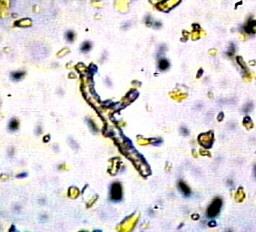Italian scientists have cracked the scientific riddle of building an engine powered by bacteria.
A bug-driven nano-motor was first proposed as an hypothesis by Japanese researchers five years ago and the hunt has been on ever since to solve the micro-mechanics involved.
A team from the National Institute for Matter Physics (INFM) came up with the idea of using wheels shaped like spiky stars to balance out the unpredictable motion of the bacteria.
The asymmetrical wheels were put into a solution of bacteria and the scientists waited to see what happened.
''To our great surprise and delight the chaotic and disordered motion of bacteria was counteracted by the irregular shape of the wheels, making the nano-wheels turn in a perfectly regular way,'' the scientists told the Physical Review Letters journal.
Giancarlo Ruocco of INFM and Rome University stressed that the team had only achieved a ''numerical simulation'' so far.
''But we are already working on the practical development of the bacteria motor,'' he added.
Experts say the breakthrough opens up entirely new prospects in the field of miniaturised mechanics and low-cost energy.










